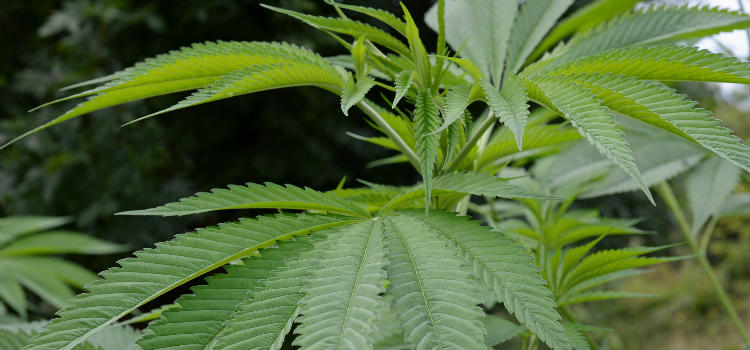 Mary’s Medicinals is a cannabis company based out of Colorado which focuses on unique, innovative products that challenge common notions about medical cannabis. Best known for their Transdermal Cannabis Patch, Mary’s Medicinals has crafted their brand as a reflection of early American apothecaries that found medicinal solutions in nature. They are currently offering their medical products in multiple states, as well as a line of CBD products that are available nationwide.
Mary’s Medicinals is a cannabis company based out of Colorado which focuses on unique, innovative products that challenge common notions about medical cannabis. Best known for their Transdermal Cannabis Patch, Mary’s Medicinals has crafted their brand as a reflection of early American apothecaries that found medicinal solutions in nature. They are currently offering their medical products in multiple states, as well as a line of CBD products that are available nationwide.
In this podcast, Shango connects with Graham Sorkin, the company’s Director of Communications and Business Development, who discusses how their product development pipeline works, how they have laid the foundation to build a national cannabis brand, and how they are working to protect their intellectual property as they pioneer new products.
Subscribe to the Ganjapreneur podcast on iTunes, Stitcher, SoundCloud or Google Play.
Listen to the Podcast
Read the Transcript
Shango Los: Hi there and welcome to the Ganjapreneur.com Podcast. I am your host, Shango Los. The Ganjapreneur.com Podcast gives us an opportunity to speak directly to entrepreneurs, cannabis growers, product developers, cannabis medicine researchers all focused on making the most of cannabis normalization. As your host, I do my best to bring you original cannabis industry ideas that will ignite your own entrepreneurial spark and give you actionable information to improve your business strategy and improve your health and the health of cannabis patients everywhere.
Today my guest is Graham Sorkin, Director of Communications and Business Development at Mary’s Medicinals. Mary’s Medicinals develops groundbreaking cannabis products based on novel delivery systems to meet the needs of patients who use cannabis. Graham Sorkin is a longtime communications professional having run global PR campaigns for Fortune 500 clients including Microsoft and Sysco. Welcome, Graham.
Graham Sorkin: Thank you so much for having me.
Shango Los: One of the reasons I was so excited to have you on today is that Mary’s approaches the cannabis market unlike anybody else. A lot of folks head towards the traditional products that you get from cannabis and they bring it over from the heritage and prohibition era manufacturing and they just do the same thing in a legal market but Mary’s Medicinals has a unique approach where you are finding delivery systems and products that didn’t prior exist and are making them from scratch, which has a tendency to blow people away. Let’s talk a little bit about your product development cycle. If you want to use the transdermal patch as an example, that might be good, but tell me a little bit about how Mary’s gets to its great products.
Graham Sorkin: Absolutely. That’s a great question, a great topic and like you said, many patients are looking for options that are not as traditional. Your grandma doesn’t want to smoke a joint or eat a brownie. We really looked at what options patients and caregivers are both familiar with, comfortable with, and used to so a patch is something you’ve seen in a hospital setting. It’s something that your grandmother or your nurse has seen before so they’re a little bit more comfortable with it, they know how it works. We saw that and said, that’s something that makes sense for the cannabis industry. Patients need that so let’s make it.
My boss, Nicole Smith, the founder of Mary’s has an interesting background in healthcare technology and marketing. She basically took that as a challenge and she worked with patches of other types before. It was a pretty straightforward process, believe it or not. Conceptually, the science behind the transdermal patch isn’t necessarily something that’s brand new, the idea has been around for decades. We’re just applying established pharmaceutical best practices to the delivery of cannabis medicine. The R&D cycles for something like that are pretty similar to what you’d see in any other industry. Of course, one of the challenges there is bringing some of those best practices from the pharmaceutical industry to cannabis. We had to work with some very leading scientists.
We brought on Dr. Noel Palmer, he’s the Americans For Safe Access Researcher of the Year last year and he was able to head up our lab and come up with some interesting improvements to increase the bioavailability of the patch and make it something that is successful and effective. With that, the next step is building out more clinical trials, more protocols, being able to really build out the scientific data around what we’re doing.
Shango Los: Where does the drive for the product come from? Are you doing focus groups of patients and finding out what their needs are first or is it something the team has come together with a whole bunch of ideas that they had preexisting. The reason why I ask is, you’ve got this great THCA patch and not a lot of folks are producing THCA products, which is nonconverted THC so it’s not as psychedelic and it acts more like a CBD and yet where I live in Washington, it’s a huge winner with patients. Where does the motivation for these particular kind of niche products come from?
Graham Sorkin: That one really started with an opportunity to isolate it. Seeing some of the benefits that many patients are getting from juicing where that’s one of the best ways to get high levels of THCA. We saw that and said there’s got to be an easier way to make that accessible to patients. Most of us aren’t lucky enough to have big gardens were we can go out and pluck a bundle of leaves and juice every morning. We wanted to make THCA more accessible and with that lab and Dr. Palmer working with us, we were able to isolate that and we’re actually very proud to be the first company in Colorado to offer that as well as in Washington. It’s really about the patients. They needed something, we found a way to do it.
THCA is a really interesting cannabinoid. Like you mentioned, it’s nonpsychoactive. It some ways it’s similar to CBD but in others it’s not. For some patients it’s that magic bullet. For example, there’s a young girl we work with in Colorado that has Dravet’s syndrome and severe seizures every day. She was trying CBD oil without success and THCA ended up being the magic bullet for her and now she’s just using a tenth of a strip all the time and that’s cut her seizures down over 60%.
Shango Los: It really is a powerful thing. Actually here locally I know of some patients who are grade school and high school students and their parents have moved them off of a CBD tincture over to your THCA patches because they’re just so much more convenient and it’s less weird to have the patch on the school kid instead of the teacher medicating an alcohol tincture. It’s just so much more convenient. Now that these products are already in the market, what kind of a feedback loop do you have built in so that you’re getting constant feedback from patients about ways that you can make the product better or so you could learn from your customer base?
Graham Sorkin: A couple of elements, there. We’ve got an RN who specializes in cannabis medicine who answers the phones and answers a lot of the customer emails that we get so that’s a great way to really connect with the community and really understand their needs, understand what’s working for them and what’s not working and where there is space to improve or create new solutions. Aside from that, social media is of course a great way to connect with the community and really hear what’s working, where people want to see other things. That’s one of the best sources of information from customers in my day-to-day life is just checking in who’s saying what on Instagram, did someone have a complaint that something was not quite right or they weren’t sure about it, that’s a great way to see what’s happening.
Shango Los: That’s actually a really great idea to have a nurse answering the phone. Most cannabis companies they don’t even have anyone on the phone. The call comes in and it rolls over right to voice mail and then you never hear back from anybody. To have somebody who is actually answering the phone but also has the experience with the human body in a way to create meaning from that feedback, that’s a really great idea.
You’re also one of the first companies to move into pet products. While people talk about giving cannabis to their dogs, either because they’re having too much recreational or more seriously when the animals have arthritis or need to be sedated after some sort of surgery, you’re one of the first people to do go ahead and do that. How did that come about?
Graham Sorkin: Largely it came from customer feedback. We started getting emails from people saying, I bought one of your CBD gel pens and my dog was very sick or in one of the cases, one of the first emails I remember their dog was dying and the vet had told them they have just a couple of days and they just wanted to find a way to make the dog a little bit more comfortable so they tried one of our products they picked up at the dispensary and had a really positive experience and they shared that with us. It sort of clicked and we said, there have to be more people doing this. That was about a year ago and we started looking into it and started using it on our pets, started talking to some vets, and saw that it was really something that made sense. All animals, almost all animals, all mammals have an endocannabinoid system so the same science, the same principles apply. It’s very straightforward and people love their animals. It’s a huge opportunity to get into, it’s a multi-billion dollar market.
Shango Los: Do you need any particular licensure to be able to develop products for pets? Is it more restrictive?
Graham Sorkin: No, it’s actually the least restrictive product we make. There are still some standards and best practices of course and we do apply all of those and ensure we’re in compliance with all sorts of restrictions but there’s actually not very many barriers to entry like there are with cannabis.
Shango Los: That sounds really interesting, Graham. I can imagine that there are a lot of people with both domestic and farm animals that this could be very useful for. Where will people buy that? Will cannabis for pets be sold in the recreational markets or is that something because the application is not for human, you’ll be able to sell it in pet stores?
Graham Sorkin: Correct. It’s going to be in pet sores. Cannabis in general is only scheduled for human consumption. CBD is basically something that we can distribute to all 50 states. It’s a little bit of a gray area and we’ve been working with our lawyers to clarify it but since these are hemp-derived, it’s from hemp we’re growing with Elite Botanicals in Colorado, we’re able to create it just like Dr. Bronner’s Soap or Hemp Granola and distribute it nationwide.
Shango Los: Wow, the dollar signs just got huge there. That’s amazing that you can bring a cannabis product that gives relief to pets that people are already prepared to spend money on their comfort and then be able to side step a lot of the cannabis laws that are making everybody else’s business so challenging. We’re going to take a short break. You are listening to the Ganjapreneur.com Podcast. We’ll be right back with my guest, Graham Sorkin of Mary’s Medicinals.
Welcome back, you are listening to the Ganjaprenuer.com Podcast. I am your host, Shango Los. Our guest this week is Graham Sorkin of Mary’s Medicinals. Before the break, we were talking about the Mary’s Medicinals new product line that is for pets. Now Graham, I also understand that you’ve got another, now a third product line which is actually Mary’s Nutritionals. Will you tell us a little bit about that?
Graham Sorkin: Absolutely. This was another one that was in response to requests from patients. We were getting dozens of emails every week from folks saying can you please, please, please ship us some CBD in Texas, Florida, all of these states that obviously we couldn’t ship our primary product line to, that would be a felony. We were able to get a little creative so one of the solutions we came up with up was finding some super high CBD, low THC strains that Elite Botanicals was growing up in northern Colorado and we were basically able to reclassify those and say this is hemp now. Legally and scientifically it’s below that threshold of THC so it’s hemp and we’re going to treat that just like Dr. Browner’s soap and be able to distribute it to all 50 states. We’re one of the first companies using domestically grown hemp to create CBD products that are available nationwide. Those are using a lot of the same innovative delivery methods that we’ve introduced through Mary’s Medicinals. It’s the transdermal patches, the gel pen, the compound, as well as a couple of products we’re working on with Elite Botanicals.
Shango Los: A few weeks ago we had Dr. Ethan Russo on and he is the guy who got us all talking about the entourage effect and whole plant medicine. What’s the difference between these full CBD nearly zero THC Mary’s Nutritionals products versus using a whole plant? What are the ailments or applications that CBD only is pointed toward?
Graham Sorkin: Great question. A lot of the ailments that people are using CBD and whole plant extract for are positively impacted by CBD. Honestly, I think a lot of us feel that a combination or whole plant extract is most effective in some instances and we would love to distribute all of our THC and THCA and CBN products nationwide. At this point, the federal government is in our way but CBD is a good first step. A lot of patients who are getting the CBD products are able to find other ways to add some THC and other plant extracts into the mix so that they can a more effective entourage effect there.
Shango Los: That’s makes sense. In the states where the normalization is still ramping up, it’s better to have some CBD in their hands that is legal and then when they do legalize locally, then adjust or expand your product line at that point. At least they’ve got something, especially for folks who have seizures.
Graham Sorkin: Indeed and a lot of people are really looking for high CBD extracts or any sort of CBD they can get. In a lot of these states on the black market, people are able to find THC but it’s a lot more difficult to find CBD unless they’re looking online and buying something that’s imported from China and that’s a whole other conversation.
Shango Los: Going into this interview, I was planning on talking about the Mary’s Medicinal brand as a new cannabis interstate brand. However, the more that we’ve spoken and understanding now that the Mary’s Nutritionals line you can actually ship throughout the country and the same with the pet products, this makes me even more interested because you’re going to be one of the first national cannabis brands. Since cannabis can’t yet be trademarked at the federal level, in what ways does Mary’s Medicinals protect their trademark in the individual states.
Graham Sorkin: We’re working with some of the top IP attorneys in Colorado and nationwide to ensure that we do have patents pending on all of our IP. We do have trademarks on several of our brands actually because they’re all held through a technology holding company, an IP company so we are able to patent certain things and are able to trademark Mary’s Medicinals and some of our catch phrases and all of that. It’s a little bit tricky but it is possible.
Shango Los: As far as getting the brand out there, it’s one thing to let customers know and patients know that your products exist but there’s also getting the brand recognition. Where do you place your advertising or how do you go about letting people know that your products exist in these new states, especially since they may not looking for cannabis products because they don’t think that necessarily what you’re selling is legal yet?
Graham Sorkin: It’s a great question and that’s one of the main challenges of my job is educating folks. It’s another one of the challenges and benefits of the company. We’ve created a brand that is exceptionally broad and we’ve found that it really transcends a lot of typical cannabis industry demographics. We reach seniors, soccer moms, hipsters, military veterans and everybody in between. In one way we’ve been very successful in creating a brand that is so broadly appealing. At the same time, it’s a challenge because we don’t have one target market. That’s always a question we get, who is your target demographic? It’s everybody, it’s your grandmother but it’s also me when my back goes out skiing over the weekend.
It’s a lot of different broad approaches to that. We do a lot of events, a lot of advertising in different types of publications. We do a lot with the cannabis industry-type publications. It’s a great way to expose the brand to budtenders and dispensary owners but at the same time, our end user customers are ultimately folks who probably wouldn’t be in a dispensary to start with. We have to reach them through more general interest media, general events. With the Mary’s Nutritionals Line, we’re actually going to be sponsoring a tough mudder marathon coming up in Colorado. It’s a pretty broad mix.
Shango Los: Yeah, I can imagine that probably for the CBD products, the smaller group read the cannabis magazines and go into dispensaries and the vast majority of your market are folks who aren’t necessarily cannabis enthusiasts that they or their pets have got pain or whatever. Have you had any push back from magazines or other folks that you want to do some kind of co-branded thing with or marketing where they have felt uncomfortable allying themselves with a cannabis company even though what you’re doing is legal on the federal level?
Graham Sorkin: Absolutely. I won’t name and shame but there is definitely cannabias out there. That’s one of the terms we been throwing around joking when different types of companies refuse to work with us just because of what we do because there’s a pot leaf in the logo and we think it’s pretty ridiculous but there’s a lot. Google won’t let us advertise, Facebook won’t let us advertise even though what we’re doing is perfectly legal in the states that we’re in. We’ve got anything they could look for, letters from our lawyers that say here are the regulations that we are within, this is perfectly legal but there is still some cannabias out there that is a challenge.
Shango Los: The transdermal patches are one of the delivery mechanisms and the transdermal pens are a second one. I personally like the pens because I feel like I can control my dosage a little bit more. We both know how important it is to control dosage with THC. Is it as important to control dosage with CBD since there is not going to be a psychedelic effect from it?
Graham Sorkin: Yes. I’m not ultimately the expert on dosing. I’d love to have you bring on one of our nurses one of these days to talk a little bit more about that but a lot of what we’ve been seeing is that high doses aren’t always positive. In a lot of cases its actually negative. A lot more research is starting to come out pointing towards low dosing as a beneficial way to medicate. Of course, everybody is going to be a little bit different. Some folks do need to absolutely flood the system with cannabinoids, but for a lot of ailments, low doses are actually more effective.
Shango Los: One of the things that folks give me feedback around the transdermals is that they like that it’s slow release because so often with THC products, you take it and it hits your bloodstream all at once and so you get this flush at the beginning and then it slowly tapers off. However, your transdermal patches, you put it on and it’s kind of a slow soak over it feels like four or five hours to me even though the first people who I saw adopt it were folks who had seizures who wanted to have something slow at work. It wasn’t until this summer and wedding season came on that I noticed that people were starting to wear them at weddings where it wasn’t going to be appropriate to medicate. I can imagine that you’re seeing all sorts of applications for your products that are a surprise to you even though you’re the one who developed it.
Graham Sorkin: Of course we are and it is quite fascinating. Some of the picture that pop up in Instagram, some things you’d expect like putting in on for a long flight or hiking but some other ones were ultimately why we created it, people using it in hospital or using it in other places where there is no way you could smoke or bring in something like a brownie.
Shango Los: Yeah, right on. Hey, it looks like it’s time for us to go to another commercial break. We’ll be right back. You are listening to the Ganjapreneur.com Podcast.
Welcome back, you are listening to the Ganjaprenuer.com Podcast. I am your host, Shango Los. Our guest this week is Graham Sorkin of Mary’s Medicinals. Before the break, we were talking about the importance of dosing in both THC and CBD products. Over time, a lot of patients keep journals so that they can track their relief with the dose that they are taking. I understand that Mary’s Medicinals has launched an app that helps patients do that. Tell me a little bit more about that.
Graham Sorkin: Earlier this year we launched Mary’s Journal. As far as we know, it’s the first mobile app designed to help patients track and optimize their medical cannabis use and the really interesting thing about besides for how it can directly help patients keep track of what’s working for them and what’s not, dosages and all of that, is that it actually anonymously pulls the data that users input and collates it. We’re actually able to bring that together to use with all sorts of research, clinical trials. We actually just announced some collaboration with TW Botanicals and Realm of Caring. We’re going to look at possibly integrating some of their products and get a much larger user base in there. It’s going to be a really powerful way to bring together all of the information that is sorely lacking in this industry at this point.
Shango Los: Yeah, amen that it’s sorely lacking. It’s so difficult to do a lot of this research when cannabis is still a Schedule I. When we had Dr. Michelle Sexton on a few weeks back, she called this kind of work citizen science. While it may not be hyper controlled by the FDA and it is getting not only anecdotal information but also data sets that are really valuable. Are are you already collecting these data sets? Are you already seeing surprising things or are we too early in the process to have really be able to have gleaned much yet.
Graham Sorkin: I’d say we’re a little early to really share some bombshell finding at this point but we’re starting to bring together this data that as you said, it’s more anecdotal and it’s not hard scientific data that the FDA is going to at but it gives us jumping off points to create those clinical trials and those research efforts that would be more formalized and controlled. If we see a trend, things that we’re already seeing anecdotally like some of the success with THCA treating seizures, that gives a great starting point to set up some clinical trials and we can go to some of the researchers we work with and take some of those data sets and say, look here’s what we found with this, this dosage, let’s start here. It’s a lot more effective than starting from zero.
Shango Los: I bet. I’ve been a product designer for a long time and the idea of getting those data sets just makes me drool because I bet you in so many cases they just point to a niche market as soon as you start massaging the data. Being able to have an anonymous focus group sounds like it would be a huge asset.
Graham Sorkin: It is and at the same time we’re really looking for more people to participate. A plea to all of your listeners, look for Mary’s Journal in the App Store and the Google Play Store and please share it with your friends, your family and start contributing more data so we can do a lot more with this. Everything is HIPAA compliant, completely anonymous. It’s a great opportunity to be a part of history really and contribute to some of these major initiatives that are going to be happening over the next few years.
Shango Los: One of the things that happens with many studies is that people get involved with it and then they drop out. I would assume that that probably happens to a certain degree with the app too where somebody thinks it’s a good idea and they get started and they’re tracking their dosing and then if they’re a patient maybe their too sick to stay up with it or they just get distracted by life. What is worked into the app that helps people come back to the app and either (a) remind them or (b) keep them so engaged that they keep going with it?
Graham Sorkin: A big piece of it is just the personal interest. People both for their own use but also to contribute want to be a part of this and of course there is some attrition like with any app or anything that you do every day, people are going to lose interest or fall off over time. We’ve actually seen a lot of consistency. Once folks start using it, they’re using it regularly and it’s set up in a way that either the patient or the caregiver can be entering information. That makes it a bit easier for some of the more seriously ill patients that want to use it.
Shango Los: Is it as simple as just popping open the app and then putting in the amount of the dose and you close the app and you’re done or is there more to it than that?
Graham Sorkin: Pretty much you can keep it simple or you can start to go into which products you used at what dose level. It checks in with you automatically at three points during the day and basically says, did you medicate? What did you do? How are your symptoms? Those three basic questions create a baseline and over time we can see the trends from that.
Shango Los: I would love to get that integrated with my fitness band so that I can track my THC and CBD intake along with my sleep and my exercise and my food intake, my goodness.
Graham Sorkin: That’s actually one of the next steps. It’s built on the Apple health platform so that ultimately we will be able to do a lot more with it and down the line we want to integrate with your blood pressure and your diet, all of those other elements that we know are so important to your overall holistic health.
Shango Los: Graham, we’ve talked about three different product lines that Mary’s has got. We’ve got the main line, the Mary’s Medicinals which is full plant cannabis products. Then we’ve got your pet line and then we’ve got the CBD only line. If people want to find out more abut these, especially the CBD stuff which is available all over the country, how can they find out more?
Graham Sorkin: That one would be Marysnutritionals.com. Of course, you can also follow our social media, Facebook, Instagram, Twitter. It’s hard to miss @marysnutritionals and for the other lines, marysmedicinals.com or likewise on all the social media. For our pet products, the company is Mary’s Pets at maryspetshop.com or @maryspetshop on all of those social media platforms.
Shango Los: Right on. That’s great. Let’s all the time we have for today. Thanks for chatting with us Graham.
Graham Sorkin: Thank you so much for having me.
Shango Los: Graham Sorkin is Director of Communications and Business Development at Mary’s Medicinals. You can find the Ganjapreneur Podcast in the podcast section of Ganjaprenuer.com. You can also find us on the cannabis radio network website and in the Apple iTunes store. On the Ganjaprenuer.com website, you will find the latest cannabis news, product reviews, and cannabis jobs updated daily along with transcriptions of this podcast. Thanks as always to Brasco for producing our show. I’m your host, Shango Los.


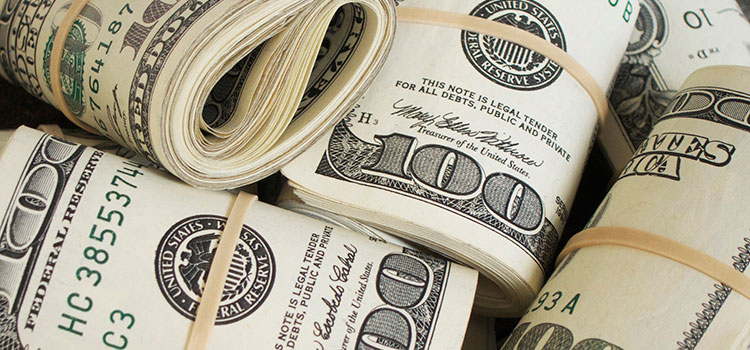

 Mary’s Medicinals
Mary’s Medicinals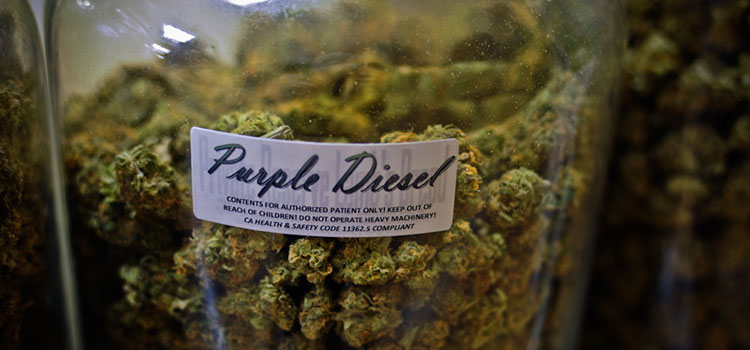







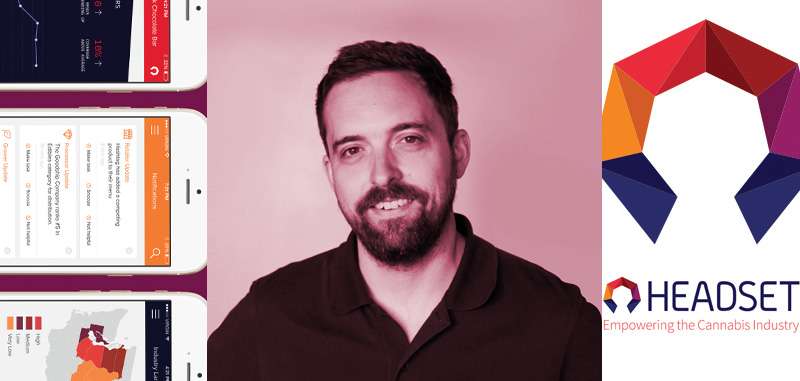
 As states have legalized cannabis for medical and recreational purposes, an industry has rapidly taken root with producers, retailers, and ancillary services popping up to meet consumer demand. Since the industry has grown so quickly, and also due to the conflict in state and federal law which could leave participants open to penalties, very little tracking of commercial and consumer trends has taken place. Recently, however, the co-founders of
As states have legalized cannabis for medical and recreational purposes, an industry has rapidly taken root with producers, retailers, and ancillary services popping up to meet consumer demand. Since the industry has grown so quickly, and also due to the conflict in state and federal law which could leave participants open to penalties, very little tracking of commercial and consumer trends has taken place. Recently, however, the co-founders of 
 Melissa Etheridge
Melissa Etheridge George Zimmer
George Zimmer Ethan Nadellman
Ethan Nadellman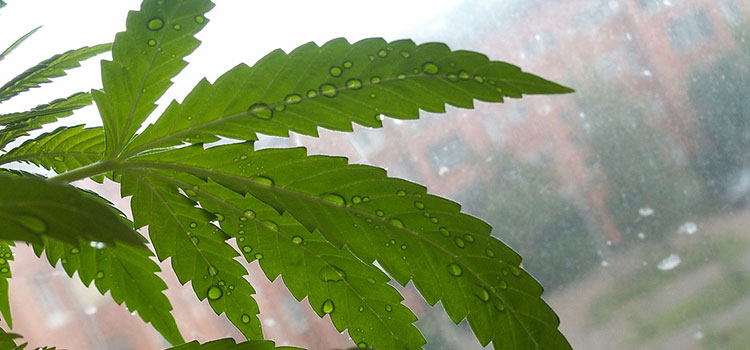



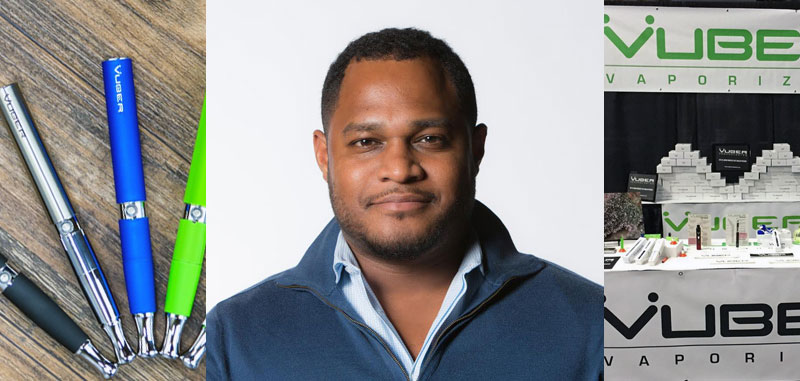
 Jim Makoso is the Vice President of Business Development at
Jim Makoso is the Vice President of Business Development at 

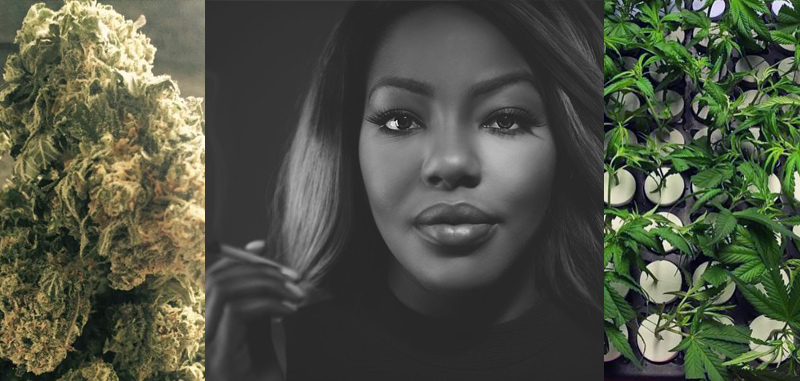
 In 2014, Charlo Greene
In 2014, Charlo Greene 